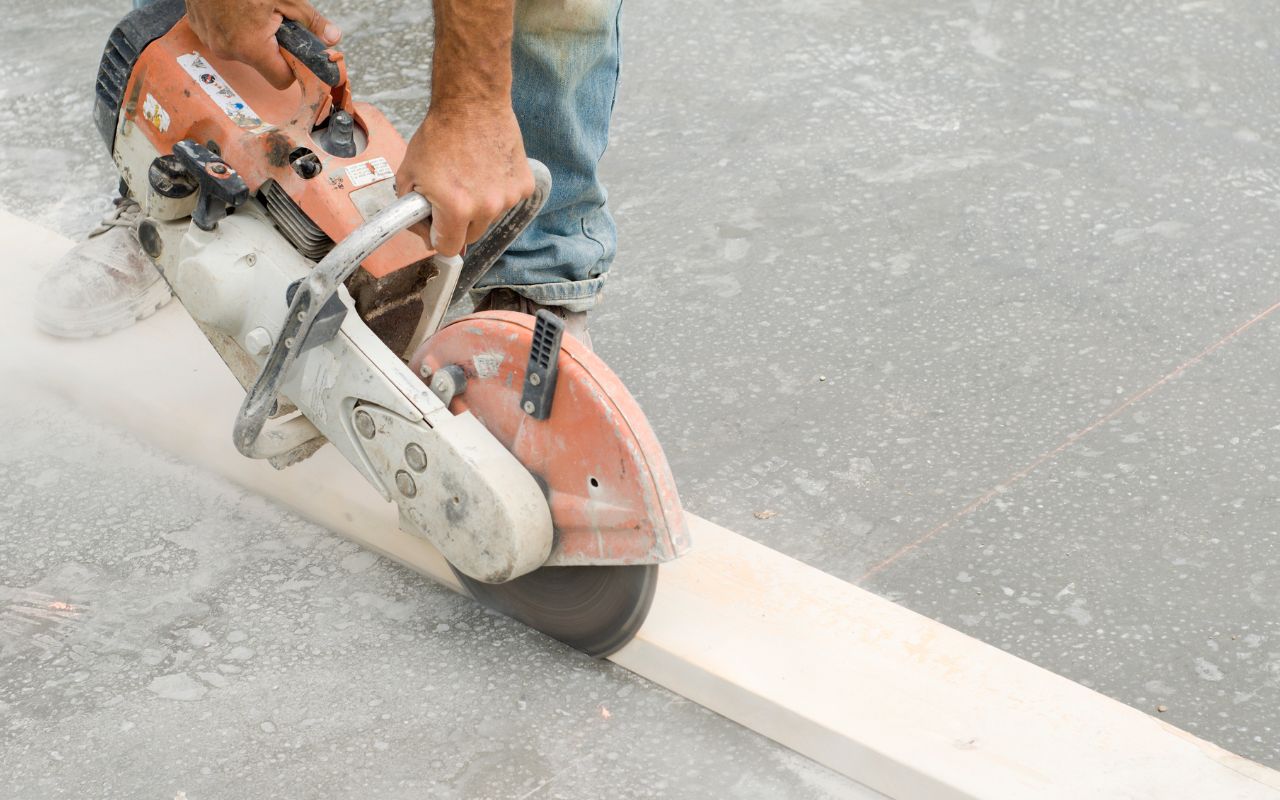
Best Practices for Concrete Saw Cutting are essential for ensuring a safe, clean, and professional result—whether you’re tackling a residential remodel or a commercial construction project. When done right, saw cutting improves efficiency and prevents costly mistakes. This post will walk you through key guidelines and techniques every contractor or project manager should know.
Best Practices for Concrete Saw Cutting
Understanding the Types of Concrete Saws
Choosing the right saw is the first step to a successful cut. The saw you use should match the job at hand:
- Handheld saws are ideal for small spaces and tight angles.
- Walk-behind saws are great for long, straight cuts in slabs or floors.
- Wall and wire saws offer advanced precision for cutting vertical or reinforced concrete surfaces.
Using the correct tool ensures cleaner cuts and reduces strain on the operator.
Wet vs Dry Cutting: Which Method is Best?
Each method has its place:
- Wet cutting is typically preferred because it reduces dust, keeps blades cool, and extends blade life. It’s ideal for outdoor and large-scale cutting.
- Dry cutting works well in quick jobs or areas with limited water use. However, it generates significantly more dust and requires specialized blades.
When choosing between the two, always consider the environment, health safety, and the used saw.
Saw Cutting Safety Guidelines You Shouldn’t Ignore
Concrete saw cutting safety is not optional—it’s a must. Protect yourself and your crew by following these essential guidelines:
- Always wear protective gear: safety glasses, gloves, ear protection, and respirators.
- Inspect saws and blades before each use.
- Secure the work area with clear markings and barriers.
- Maintain control of the saw with both hands at all times.
How to Choose the Right Blade for the Job
Your blade selection directly affects the quality of the cut. Here’s what to consider:
- Diamond blades are the standard for concrete because of their strength and durability.
- Match the blade to the material—some blades are optimized for cured concrete, while others are best for green (newly poured) concrete.
- For wet cutting, ensure the blade is compatible with water use; use a blade built to withstand heat for dry cutting.
The right blade reduces chipping and ensures smoother, faster cuts.
Mastering Precision Cutting Techniques
A good cut is not just about power—it’s about precision. Here are a few precision cutting techniques to follow:
- Score the surface first to mark your line and prevent misalignment.
- Apply even, steady pressure throughout the cut to avoid overcutting or damaging the surrounding concrete.
- Check alignment frequently and make adjustments as needed.
Precision pays off in cleaner results and fewer reworks.
Tips for Controlling Concrete Cutting Depth
Controlling concrete cutting depth is essential to avoid damaging pipes, rebar, or sublayers beneath the surface:
- Use a depth gauge or set the blade to the proper height.
- Start with shallow passes and increase depth gradually.
- Refer to slab thickness and structural drawings before beginning.
Proper depth control ensures safety and preserves the integrity of the structure.
Cutting Concrete Indoors: What to Know
Cutting concrete indoors comes with unique challenges. Here’s how to manage them:
- Use wet cutting to minimize airborne dust whenever possible.
- Ensure proper ventilation—open windows, run fans, and use exhaust systems.
- Equip saws with HEPA vacuums or dust shrouds to comply with OSHA dust standards.
Indoor work requires careful planning, especially in occupied buildings or tight spaces.
Reducing Dust in Concrete Cutting
Dust is more than a nuisance—it’s a health hazard. To reduce dust in concrete cutting:
- Always prefer wet cutting when conditions allow.
- Use dust collection systems on all dry-cutting tools.
- Provide respirators to operators and nearby workers.
These practices protect respiratory health and create a safer job site overall.
FAQs: Common Questions About Concrete Saw Cutting
What’s the best saw for cutting a concrete floor?
A walk-behind saw with a diamond blade is most efficient for significant floor cuts.
Can I cut concrete indoors safely?
Yes—use wet methods, dust controls, and proper ventilation to minimize risks.
Is it better to cut concrete wet or dry?
Wet cutting is safer and cleaner, but dry cutting may suit specific conditions.
How deep should I cut into the concrete?
It depends on the application, but typically 1/4 the slab’s thickness for control joints.
Let’s Help You Get the Job Done Right
By following these best practices for concrete saw cutting, you can achieve cleaner cuts, protect your team, and extend the life of your tools. Whether you’re dealing with interior slabs, walls, or outdoor surfaces, preparation and technique make all the difference.
Need help from professionals who do this every day?
Grav Core Drilling LLC is based in Glen Burnie, MD, and proudly serves DC, Maryland, and Virginia. We specialize in Concrete Cutting, Core Drilling, and Concrete Saw Cutting for commercial and residential clients.
Visit us at gravcoredrilling.com to request a quote or schedule your project.
